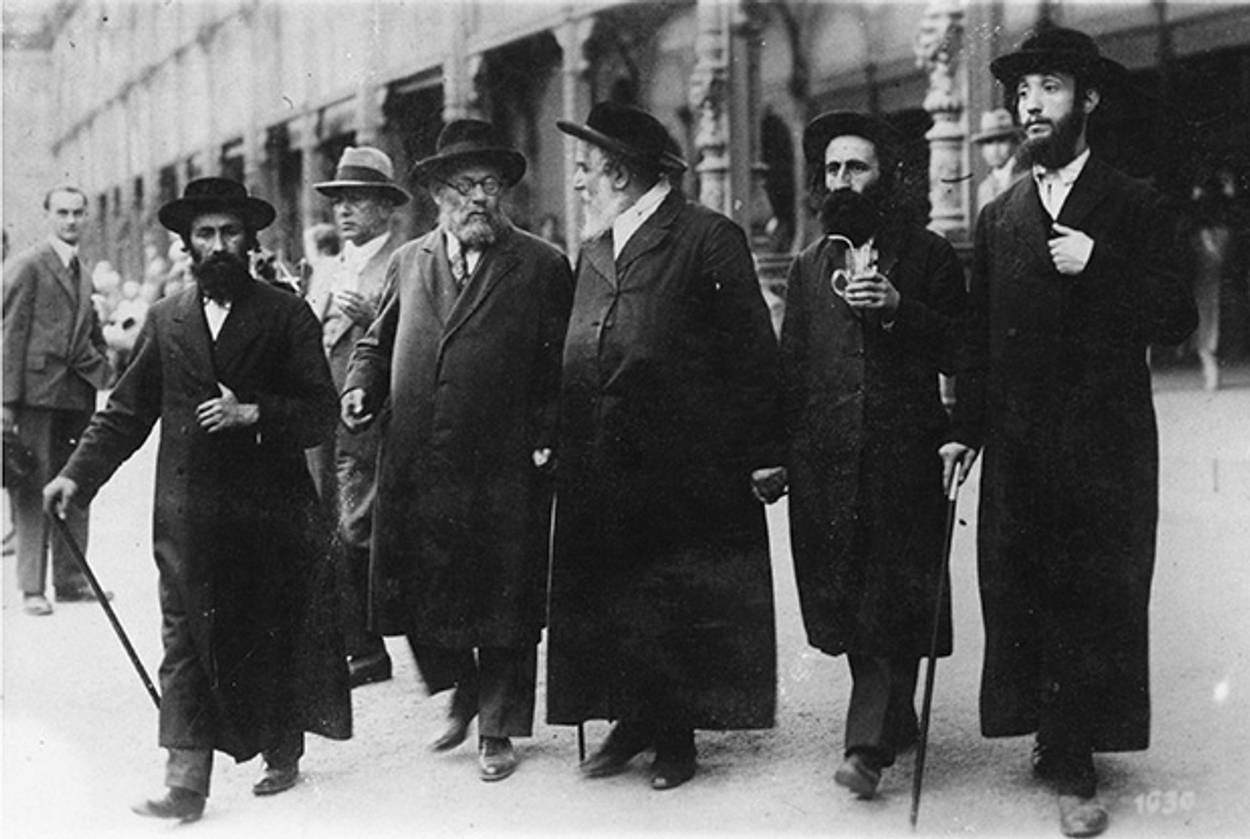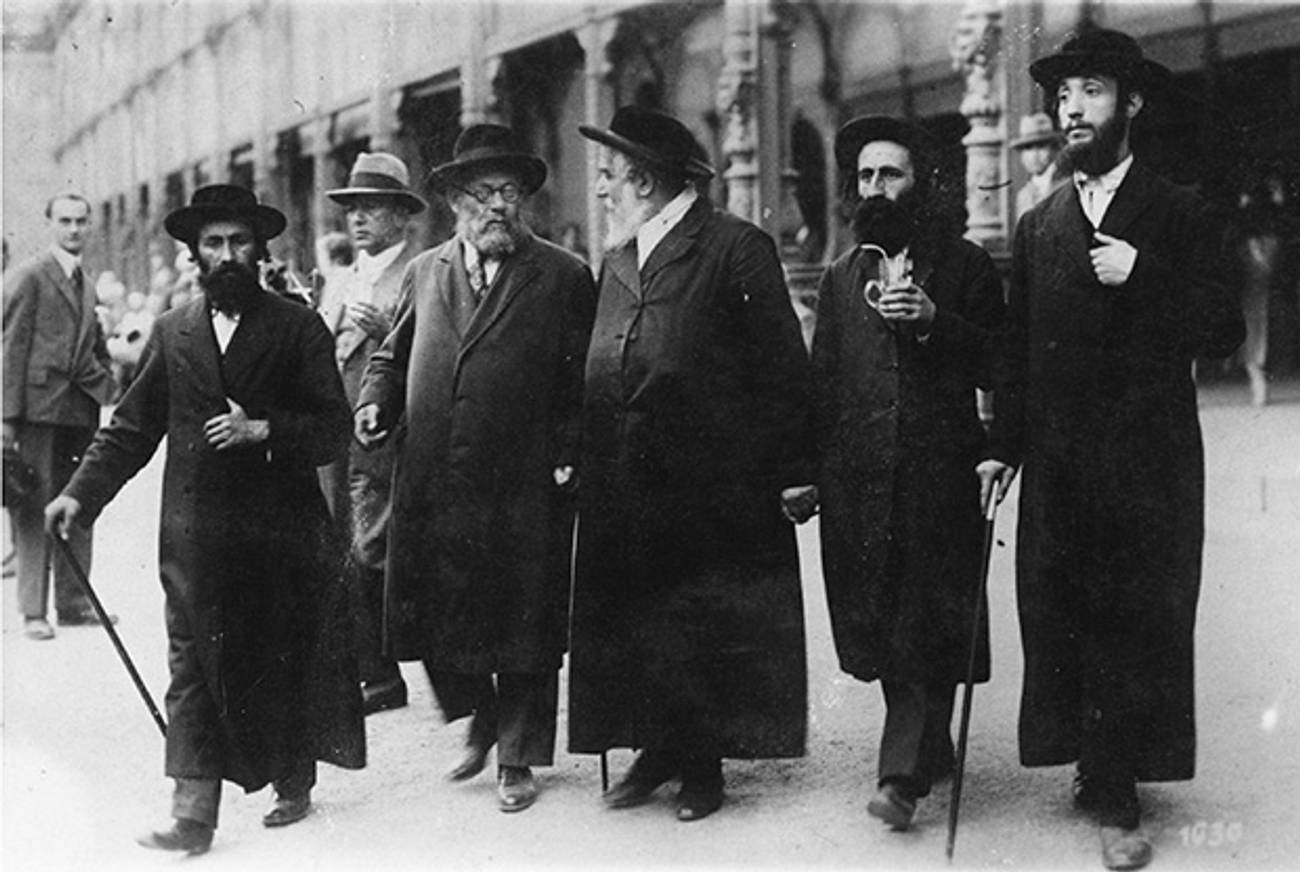The Haunted Spas of Europe
Jews flocked to retreats like Marienbad, but what couldn’t be healed was Europe’s anti-Semitism




From the Catskills hotels of yore to the luxurious modern spas in Arizona and California frequented by the Manhattan elite, Jewish resort culture is bound up in our minds with success in the Golden Land. Yet the apricot scrubs and mud-baths with which the daughters (and sons) of American Jewry comfort themselves pale next to the bygone Jewish spa culture of Europe. Thankfully, a new book by Mirjam Zadoff, Next Year in Marienbad: The Lost Worlds of Jewish Spa Culture (translated from the German by William Templer), comes to fill the void left by the destruction of a world once populated by a multitudinous European Jewry who lived and often bathed and relaxed together. Drawing from a wide variety of historical sources, Zadoff reconstructs the Jewish experience at the western Bohemian spas, which she depicts as “Jewish spaces,” places where Jews felt at home after adopting the European middle-class practice of annual spa visits, often in the summertime.
Take Karlovy Vary—or Carlsbad, as this town was known in its heyday, in the first decades of the 20th century. Wishing for a kosher meal, one would have found oneself being asked the kind of kashrut one preferred, for there was a restaurant that catered to the stringencies of every sect. A similar range of choices would confront whoever looked for a prayer house: from imposing synagogues or “Temples” liberal style, to prayer rooms set up ad hoc by Chasidic courts that arrived accompanying their rebbe during his annual cure, and other traditional minyanim for those to whom organs and mixed choirs were unpalatable. While strolling on the famous promenade, a visitor might happen to meet figures of the stature of Theodor Herzl and Theodor Lessing, Yiddish and Hebrew writers such as Judah Leib Gordon, Sholem Aleichem, and Chaim Nachman Bialik, along with hundreds and thousands of other Jewish guests—men, women, and children, who “invaded” every corner of the health resort during the high season. In the woods, one could have bumped into a throng of Belzer Chasidim accompanying the Rebbe, who enjoyed his walks on the forest paths.
Carlsbad, Marienbad, and Franzensbad gained a Jewish clientele that made them veritable so-called Jewish towns, and a rich Jewish life unfolded there, with suitable facilities and institutions. In addition to countless kosher hotels, restaurants and prayer houses that catered for all tastes, a mikveh, and a Jewish cemetery, the local infrastructure included Jewish hospitals, sponsored by large Jewish communities as Vienna, Prague, and Berlin and by private benefactors, which made treatments at the springs available also to the poor—the Jewish workers and petty-bourgeois artisans and small-tradesmen in search of healing therapies for their afflictions.
Who did not come there? Assimilated and traditional Jews, Hasidim and Reform Jews, Zionists, middle-class, socialist and communist Jews from Germany, Austria, Russia, Galicia, and even from America and the Land of Israel, all made their way to the Bohemian spas. Strategically situated at the crossroads between East and West, these resorts were a natural choice for those seeking a vacationing place that offered the required combination of health, sociability, and amusement.
Jews who suffered illnesses such as diabetes, which in the early 20th century was believed to be a typically Jewish disease, often chose Carlsbad—billed as the spa for sugar, because of the composition of its springs. Many others experienced illnesses with nervous components, which were considered typical of city Jews, and they sought the relaxing effect of staying in a fashionable watering place, with its ritualized and synchronized daily routine. During a spa visit, guests typically spent their days in a physical routine recommended by their doctors that combined the use of the waters through drinking or immersion, and scheduled meals, frequently taken in the company of others. The intervals between treatments were devoted to short excursions, parlor games, strolling the promenade, or attending social and cultural events. The routine of the spa visit was perceived as a health-promoting experience. It was not just the waters that contributed toward promoting a feeling of improvement among the sick: There was the journey to the spa, the change of environment, the opportunity to make new acquaintances, the distraction from everyday concerns provided by music and dance, the opportunity to rest and distance oneself from domestic concerns. Spa patients left behind as much as they could their worries about business and domestic affairs and tried to refrain from strenuous activities; even reading daily newspapers was considered “not Kurgemäß,” not appropriate for the cure.
Jewish patients and guests found at these Bohemian spas a unique infrastructure that allowed many Jewish worlds to co-exist, at times even to communicate and interact. Spas were more than anything stages for observing and being observed. The regular visits of Chasidic rebbes are well known and have left behind not only written but also visual documentation. The Gerer Rebbe; the Wonder Rebbe of Sadagora; the Belzer Rebbe and after him his son, the Satmarer Rebbe arrived at Mariensbad and Carlsbad with an entourage comprising sometimes hundreds of followers. As they promenaded in town on their way to the water springs wearing their traditional attires, these outstanding Hasidic figures captured the interest of other guests, Jews and non-Jews—including Mark Twain, who happened to be in Marienbad in 1891 and described the Hasidic presence in town with sympathy and respect. “Uniforms are so scarce that we seem to be in a republic,” he wrote in a chapter of Europe and Elsewhere. “Almost the only striking figure is the Polish Jew. He is very frequent. He is tall and of grave countenance and wears a coat that reaches to his ankle bones, and he has a little wee curl or two in front of each ear. He has a prosperous look, and seems to be as much respected as anybody.”
Zionists, for all their criticism of the decadence of diasporic existence, did not avoid these places; quite to the contrary. Marienbad in particular was a meeting place for Zionist leaders, including Chaim Weizmann, Max Nordau, and Nahum Sokolow, who took advantage of the seemingly peaceful, depoliticized atmosphere at the health resort to expose themselves to different ideas and attitudes that prevailed among Jews. In 1921 Carlsbad, then part of nascent Czechoslovakia, was chosen by the Jewish nationalist movement as the ideal venue for the 12th Zionist Congress, the first to take place following the Great War and the Balfour Declaration. Several hundreds of delegates and thousands of guests convened at this resort to “heal the soul of the nation,” and those who witnessed the enthusiastic atmosphere did not remain indifferent, and they could not but perceive this as a most powerful experience. Years later, a similar venue was selected by Agudas Israel for what turned out to be the last World Conference of Orthodox Jewry before World War II, convened in Marienbad in 1937, with its numerous participants, in their singular attire, dominating the town’s landscape.
But even when there were no huge events, during a regular summer season, Jews constituted a dominant group, and the nearness of heterogeneous Jewish groups in one town offered numerous possibilities for forging the most unexpected encounters. Perhaps only in the permeable social boundaries of Marienbad was it not unthinkable that Franz Kafka could join the entourage of the Belzer Rebbe for a walk around town.
***
This is the bright side of the story. But there was also a darker side, which as Zadoff describes wonderfully in her book was intertwined throughout the Jewish story of these towns. As she traces the “genesis, transformation, and dissolution” of the Jewish spas, Zadoff presents us not with a linear development, but rather shows how the reality of Europe’s growing aversion to Jews was present all along. It is not incidental that even in the heyday of the Jewish presence at the Bohemian spas, Jews had their own enclaves; coexistence with members of other religions was never widespread. Jews lived apart from the rest, segregated within their own (invisible) boundaries, as if in a protected sanctuary—admittedly, not unlike other groups in these international vacation towns, at a time of intensifying national and religious tensions in the final decades of the Habsburg Empire and through the rise of Nazism.
Of course, many hoped and believed that things would evolve differently. Back in the 18th century, in the early stages of Jewish acculturation, spas offered communicative spaces where social and religious differences could be bridged; they seemed to be ideal places for practicing the principle of religious tolerance. When German Jews started flocking to the fashionable spas, these cosmopolitan settings in which the ideal of sociability was nurtured offered a stage for interreligious encounters. Moses Mendelssohn, the famous Jewish philosopher, spent two summers in Pyrmont in northern Germany in the early 1770s, and in addition to the strenuous therapeutic treatment he underwent in the hopes of recuperating from the mysterious illness he suffered, he socialized with non-Jews, as did other members of the Jewish economic and intellectual elite. It was in Carlsbad in 1795 that Sara and Marianne Meyer, two sisters from the Jewish elite in Berlin, established a lifelong friendship with none other than Goethe. Jewish women from the famous Eskeles dynasty in Vienna also socialized with the famous writer during their common stay in Carlsbad and Franzensbad. It was while vacationing at this latter spa in 1797 that another Jewish woman, the Breslau-born Esther Gad, then an aspiring author, made the acquaintance of Jean Paul Richter, a German writer widely admired at the time.
However, inter-religious sociability failed to become the dominant feature of the spa. It was rather Bäderantisemitismus, the specific type of anti-Semitism evident at spas and resorts, that eventually gained the upper hand. At intimate spas in Germany anti-Semitism was outright and expressed itself in a direct rejection of Jewish visitors, with some petty bourgeois localities purposely fostering this image; in the large, international spas in western Bohemia the anti-Semitism was more genteel: Jewish summer guests received friendly and courteous treatment, but during the winter the latent hostility was given free rein, and aggression was turned toward the local Jewish community. On the eve of World War II, even the summer idyll was shattered. By the end of 1938, six weeks after the Nazi invasion, Marienbad locals boasted in the Marienbader Zeitung: Our town is judenfrei.
***
Like this article? Sign up for our Daily Digest to get Tablet Magazine’s new content in your inbox each morning.
Natalie Naimark-Goldberg, Research Fellow at the Department of Jewish History, Bar-Ilan University, is the author of Jewish Women in Enlightenment Berlin.
Natalie Naimark-Goldberg, Research Fellow at the Department of Jewish History, Bar-Ilan University, is the author of Jewish Women in Enlightenment Berlin.